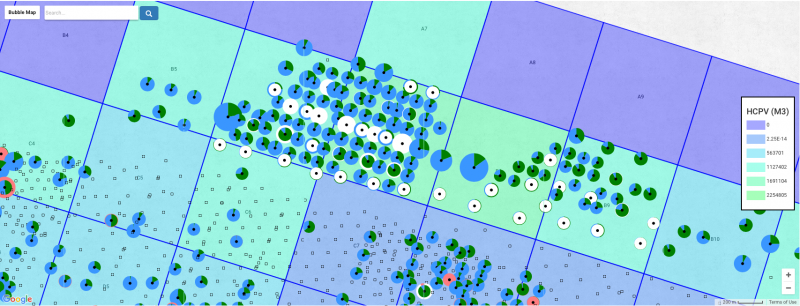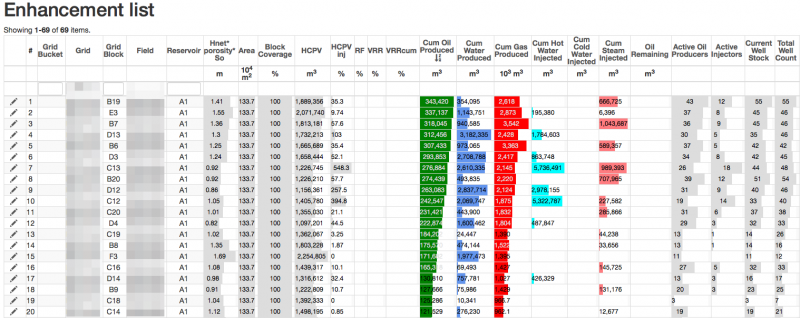Difference between revisions of "Mature Water Flood Analysis"
From wiki.pengtools.com
| Line 12: | Line 12: | ||
===Workflow=== | ===Workflow=== | ||
#Upload the required data (see below) | #Upload the required data (see below) | ||
| − | #Check production/injection by | + | #Check production/injection by [[Completion]]s, define [[Reservoirs]] order for analysis |
#Gridding - Divide the field into patterns/blocks/buckets ("Blocks" below) (Try to put the same grid for all the reservoirs) | #Gridding - Divide the field into patterns/blocks/buckets ("Blocks" below) (Try to put the same grid for all the reservoirs) | ||
#Calculate STOIIP for each reservoir using blocks | #Calculate STOIIP for each reservoir using blocks | ||
| Line 27: | Line 27: | ||
*Upload [[Perforation]]s | *Upload [[Perforation]]s | ||
*Upload [[Well Log Interpretion]]s | *Upload [[Well Log Interpretion]]s | ||
| − | *Upload [[ | + | *Upload [[Reservoirs]] |
*Upload [[PVT]] | *Upload [[PVT]] | ||
*Upload [[Monthly Measures]] | *Upload [[Monthly Measures]] | ||
| − | ====2. | + | ====2. [[Completion]]s==== |
| − | When | + | [[Completion]] is defined as any combination of the producing [[Reservoirs]] in one [[Field]]. |
| + | For example if the [[Field]] has [[Reservoirs]]: A, B, C producing, then [[Completion]]s are: A, AB, AC, B, BC, C. | ||
| + | |||
| + | When [[Field]] produces from the multiple reservoirs | ||
| + | |||
| + | , and production allocation between the reservoirs is an issue then: | ||
| + | |||
| + | |||
Revision as of 13:03, 31 January 2017
Contents
Mature Water Flood Analysis (MWFA)
Mature Water Flood Analysis is a workflow for identifying the performance gaps in the mature waterfloods performance.
As a result Mature Water Flood Analysis generates Blocks/Patterns Enhancement List.
Workflow
- Upload the required data (see below)
- Check production/injection by Completions, define Reservoirs order for analysis
- Gridding - Divide the field into patterns/blocks/buckets ("Blocks" below) (Try to put the same grid for all the reservoirs)
- Calculate STOIIP for each reservoir using blocks
- Match STOIIP to official numbers by changing the edge blocks areas
- Make Plots (by field, by reservoir, by block):History, RF vs HCPVinj, RF vs well spacing, WOR vs Np, VRR vs t
- Make Maps (by reservoir) showing Blocks: HCPV, HCPVinj, RF, VRR
- Calculate Blocks Enhancement List
- Draw conclusions
1. Data Upload
- Create Fields
- Upload Wells
- Upload Deviation Surveys
- Upload Perforations
- Upload Well Log Interpretions
- Upload Reservoirs
- Upload PVT
- Upload Monthly Measures
2. Completions
Completion is defined as any combination of the producing Reservoirs in one Field. For example if the Field has Reservoirs: A, B, C producing, then Completions are: A, AB, AC, B, BC, C.
When Field produces from the multiple reservoirs
, and production allocation between the reservoirs is an issue then:
References
Wolcott, D. ; Applied Waterflood Field Development, Energy Tribune Publishing Inc., 2009.


